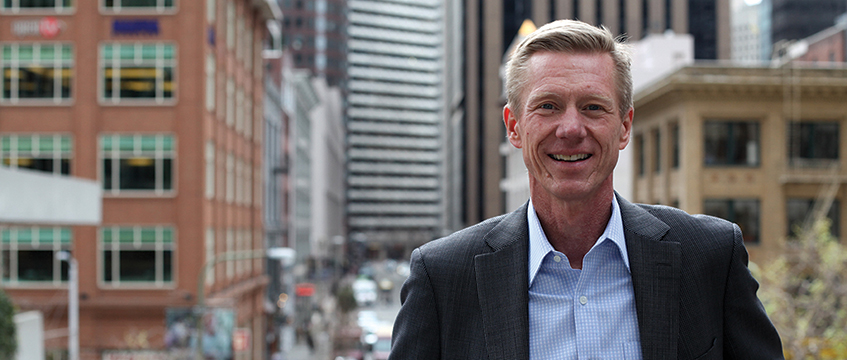Q&A: Why is it such a good time for start-ups looking for workspace in the Bay Area?
Dan Harvey, head of Bay Area occupier services, CBRE
Agile workplace solutions are not new. But they are, at long last, moving beyond traditional co-working for start-ups and rapidly scaling into the occupier enterprise zone.
This is being driven by the convergence of three things. First, software and mobility are eating the world and accelerating the speed of everything we do.
Dan Harvey, head of Bay Area occupier services, CBRE
Agile workplace solutions are not new. But they are, at long last, moving beyond traditional co-working for start-ups and rapidly scaling into the occupier enterprise zone.
This is being driven by the convergence of three things. First, software and mobility are eating the world and accelerating the speed of everything we do.
Then there is the rise of the digital-native millennial workforce. And, finally, the unprecedented corporate value creation via this millennial workforce and the insatiable tech company drive to recruit and retain this talent.
In the 1950s, the average age of a Fortune 500 company was 60+ years. Today, it is 15+ years and getting shorter.
As software and mobility become all-encompassing, corporations are being disrupted at an alarming rate. They no longer have the visibility necessary to financially optimise the workplace and are trading long-lease-term optimisation for nimbleness and are willing to pay an “agility premium” to get it.
With real-time data collection and platform adoption, the emergence of transactional platforms, nascent as it may be, is here. And it will speed up and reduce friction in the delivery of the agile workplace
WeWork, Industrious and Regus/Spaces are examples of agile providers enjoying the collection of that premium.
The question is whether institutional real estate owners will continue to let the likes of WeWork earn the carry trade and carry on their exponential scaling? Or will they get in the game and directly compete?
I can say that, from personal experience, institutional ownership has awoken.
I invited the ever insightful and passionate Lisa Picard, chief executive of Equity/Blackstone, to our Occupier Insight Series in San Francisco a few weeks ago, and she delivered some “pointy end of the spear” thinking on how Equity Office and others are thinking about playing in this agile workplace.
The rise of technology platforms and the willingness of the millennial workforce to share personal data is creating a vacuum into which tech CRE and VC money is rushing to fill the platform void.
Companies like LiquidSpace and Convene are building digital platforms that are collecting terabytes of data to gain insight into how this workforce wants to experience the workplace.
Offering an “Elon Musk Ludicrous” workplace experience is the tribal tattoo that technology companies are offering in their effort to win the war for exceptional talent.
With data collection and platform adoption happening in real time, the emergence of transactional platforms, nascent as it may be, is here. And it will speed up and most of all, reduce friction, in the delivery of the agile workplace.
Then there is the unprecedented corporate value creation. The market cap value of Facebook, Apple, Amazon and Google per employee has risen to unprecedented levels.
Facebook for example, has a market cap of more than $500bn and roughly 20,000 employees, which means each Facebook employee has created corporate wealth north of $25m.
Compare that to $2m per employee at Intel. Companies know they must deliver a workplace that signals to these wealth-creators “come work for us and we will ignite your professional journey”.
That workplace is driven by software and demands mobility, and thus must be nimble.
So, what now? Increasingly, old-growth forest companies are feeling the pressure and seeing the light. They are reaching out to the hip and cool curators of culture to help transform their workplace to compete with the tech titans and all the children they have spawned.
This year is shaping up to be the year of agility. If you look across the global markets and the super cities, the agile workplace is about 1.5% to 2% of total market inventory.
Many industry voices are saying agile will scale to 20% to 30%. Even if they are wildly wrong, there is headroom from where we stand today. There will be winners and losers. Enjoy the ride.











